Cornwall Railway
Introduction
In 1859 this company opened a railway west from Plymouth (Cornwall Junction on the 1849 extension of the South Devon Railway) to Truro (Penwithers Junction on the 1852 West Cornwall Railway). Today it is part of the Cornish Main Line from Plymouth to Penzance.
It is almost entirely double track and the line features a number of fine viaducts, the most famous of which is the Royal Albert Bridge.
In 1876 a curve was put in at Plymouth to allow direct access to the present station (opened as Plymouth North Road in 1877).
In 1889 the line became part of the Great Western Railway.
In 1892 it was converted from Broad Gauge to Standard Gauge.
The original route from Wearde (west of Saltash) to St Germans was replaced in 1908 by a new alignment further inland (Saltash to St Germans Deviation (Great Western Railway)).
Dates
Portions of line and locations
This line is divided into a number of portions.
Plymouth to Truro
This junction was north of Plymouth Millbay, the western terminus of the South Devon Railway which reached Millbay in 1849. The junction was formed in 1859 when the Cornwall Railway opened, extending the line west to Truro (Penwithers Junction), although a reversal was needed in Millbay station to continue the journey west.
...
See also
South Devon Railway
This junction opened as part of a west to east curve which allowed direct running west from Plymouth, (before it opened trains reversed at Plymouth Millbay).
...

Ewan Crawford 19/11/2009
This was the junction for a London and South Western Railway branch (later part of their main line). The signal box was on the north side of the line.
...
See also
Devon and Cornwall Railway
This halt opened in 1904 and closed in 1921. It was directly west of Devonport Junction and on the former Cornwall Railway.
...
This was the goods yard just south east of Devonport Albert Road. It was served from Devonport Albert Road Junction and was a short branch.
...
This junction was just east of Devonport Albert Road. A short goods branch left the line running south east to Devonport Goods.
...
This is a two platform station. The short Devonport Tunnel is just to the west and Devonport Albert Road Junction, for the later goods yard Devonport Goods which replaced a small yard to the west, was to the east.
...
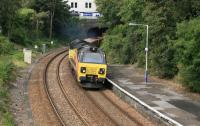
Roger Geach 20/09/2015
This is a double track 117 yard tunnel between Devonport and Dockyard stations.
...
This is a two platform station to the east of the southern part of the Devonport Dockyard.
...
This is a double track viaduct between Dockyard station and the former Ford Halt. It was originally a single track viaduct crossing the now infilled Keyham Lake.
...
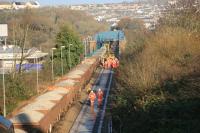
Roger Geach 30/11/2014

Ewan Crawford 20/11/2009
This was a two platform halt east of the Devonport Dockyard and at the north end of the Keyham Viaduct.
...
This is a three platform station with two main platforms on the mainline, the eastbound being an island with a looped line on the east side. The station is east of the north end of the Devonport Dockyard.
...
This junction gives access to the Devonport Dockyard and its internal lines (the Keyham Dockyard Railway) from the north. The connection is just south of the Weston Mill Viaduct.
...
This double track viaduct crosses the Weston Mill Lake (much of which has been reclaimed). The original viaduct was single track.
...
This junction was put in in 1941 by the Railway Executive. It allowed a train from the Plymouth, Devonport and South Western Junction Railway to join the Cornwall Railway and reach the Devonport Dockyard.
...
This is a two platform station to the east of the Royal Albert Bridge. St Budeaux Victoria Road, on the line to Bere Alston, is just to the north east. A little to the north west the Cornwall line crosses over the Bere Alston line.
...

Roger Geach 27/01/2011
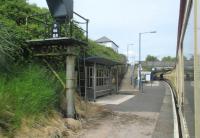
David Bosher 30/05/2015
This famous single track viaduct designed by Isambard Kingdom Brunel crosses over the River Tamar from St Budeaux Ferry Road (east) to Saltash (west). It has two large trusses crossing in the centre and is a 19 span bridge. It is 2,200 ft long, crossing the water at 100 ft. It originally carried a broad gauge line. The ends of the two truss sections are marked 'I. K. BRUNEL, ENGINEER ...
More details
Roger Geach 12/04/1974
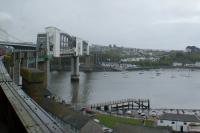
John McIntyre 22/04/2012

Ewan Crawford 16/09/2011
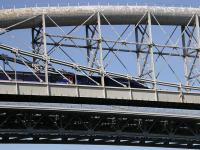
Neville Davies 03/05/2009
This is a two platform station to the west of the Royal Albert Bridge. The main building is on the eastbound (Plymouth bound) platform. The line doubles to the immediate east of the station as it is single over the viaduct. There was a goods yard to the west.
...

...
Roger Geach 14/01/2023
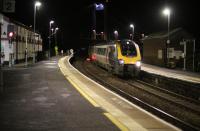
Roger Geach 14/01/2023

Ewan Crawford 16/09/2011

Ian Dinmore 21/12/1985
This is a double track viaduct (originally single) south west of Saltash station.
...
This platform was named for HMS Defiance of 1861. She was the last ship of the line built for the Royal Navy. In 1886 Defiance was moored at Wearde Quay and became the Navy's torpedo and mining training school at Devonport. Defiance Platform opened in 1905 to serve the establishment, and was relocated in 1907 when the Saltash to St Germans deviation opened. The platforms were just east of ...
More details
Roger Geach 16/08/2023
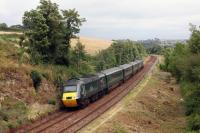
Roger Geach 27/06/2023
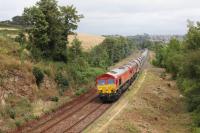
Roger Geach 27/06/2023
This was the junction between the original course of the Cornwall Railway and the 1908 deviation, which ran further north, between Wearde and St Germans (Saltash to St Germans Deviation (Great Western Railway)). After opening of the deviation the east end of the original line was used to dismantle the timber viaducts and afterwards remained as a siding with a loop between the junction ...
More detailsSee also
Saltash to St Germans Deviation (Great Western Railway)
This Mail Apparatus was just west of Wearde Junction on the original course of the Cornwall Railway which was bypassed in 1908.
...
This single track viaduct crossed the Forder Lake. It was replaced by the Forder Viaduct on the new alignment opened to the north in 1908.
...
This single track viaduct crossed the Wivelscombe Lake. It was replaced by the new alignment opened to the north in 1908.
...
This loop was to the west of the Wivelscombe Viaduct on the single track line between Saltash and St Germans. This portion was replaced by a double track deviation to the north in 1908. The loop was on the north side of the running line and there was a signal box on its north side.
...
This single track viaduct crossed the River Lynher. It was replaced by the Nottar Viaduct to the north on the replacement double track alignment between Saltash and St Germans in 1908.
...
This passing loop was between Lynher Viaduct [1st] and Boat House Viaduct. There was a signal box on the north side and a siding, making a trailing connection to the westbound line, on the south side.
...
This single track viaduct crossed the River Tiddy just to the east of St Germans station. It was replaced by the St Germans Viaduct on the new double alignment (between Saltash and St Germans) just to the south. At the east end of the viaducts the old alignment is crossed by the newer one as the deviation generally runs to the north of the original Cornwall Railway.
...
This is a two platform station. The goods yard was to the east. To the east of the station the original single track course of the Cornwall Railway (which crossed the Boat House Viaduct) was replaced by a new double track line over the St Germans Viaduct and through to Saltash in 1908.
...
See also
Saltash to St Germans Deviation (Great Western Railway)
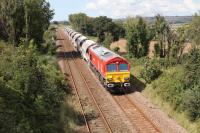
Roger Geach 16/08/2023
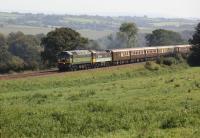
Roger Geach 09/09/2023
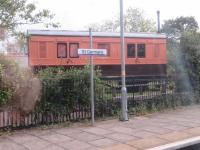
...
Alastair McLellan 08/10/2019
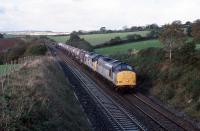
Roger Geach 25/10/1994
This is a double track viaduct east of Menheniot.
...
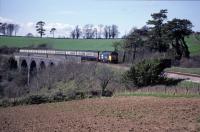
Roger Geach 21/04/1987
The Coldrenick or Coldrennick Viaduct is a double track viaduct just south east of Menheniot station.
...
This is a two platform station. The goods yard was on the south side of the station, a siding making a trailing connection to the westbound line. The signal box was on the westbound platform. A station building survives on the eastbound platform. The village of Menheniot itself is about a mile away by road to the north.
...
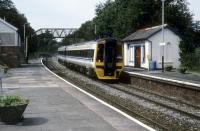
Roger Geach 19/08/1997
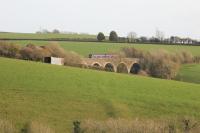
Roger Geach 25/11/2011

Roger Geach 15/07/1990

Roger Geach 05/09/1989

Roger Geach 13/02/1978

Roger Geach 03/09/1988
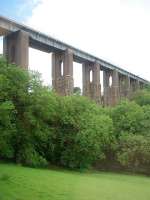
Mark Bartlett 15/06/2010
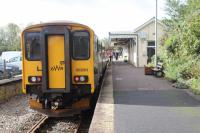
Alastair McLellan 08/10/2019

Roger Geach 22/12/1974

Ian Dinmore 02/06/2002

Ian Dinmore 01/06/2002
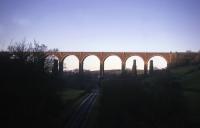
Roger Geach 04/01/1975

Roger Geach 13/06/1976
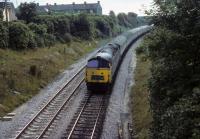
Roger Geach 12/07/1976
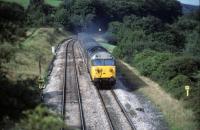
Roger Geach 09/09/1987

Roger Geach 04/09/1976

Roger Geach 04/02/2023

Roger Geach 02/08/2015
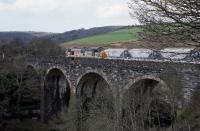
Roger Geach 16/04/1992
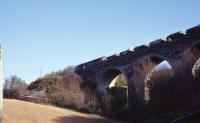
Doug Nicholls /04/1973

Roger Geach 21/04/1987

Roger Geach 06/04/1974
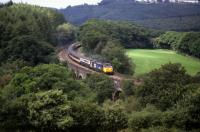
Roger Geach 29/08/1987
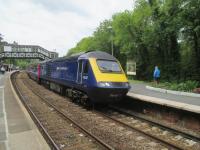
David Bosher 30/05/2015

Roger Geach 25/01/2023

Roger Geach 30/04/1977

Roger Geach 30/03/1984
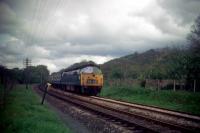
Roger Geach 07/05/1972
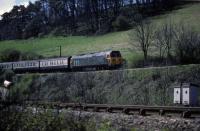
Roger Geach 21/04/1987
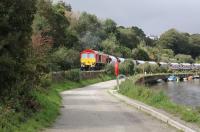
Roger Geach 12/09/2023

Roger Geach 03/08/2000

Brian Haslehust /07/1964

Roger Geach 22/04/1987
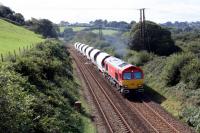
Roger Geach 13/09/2023

Doug Nicholls /04/1973
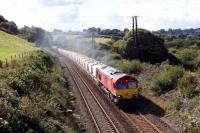
Roger Geach 29/09/2022
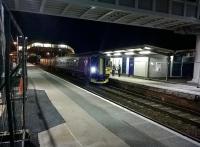
Ken Strachan 28/11/2014

Ian Dinmore //1979

Ken Strachan 29/11/2014

Ian Dinmore 18/08/1981
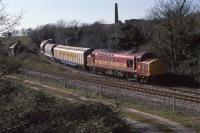
Roger Geach 16/03/1999
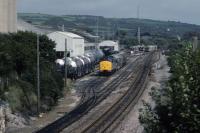
Roger Geach 16/09/1991
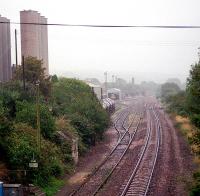
Ewan Crawford /09/2002
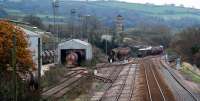
Ewan Crawford 18/11/2009

Roger Geach 23/04/1987
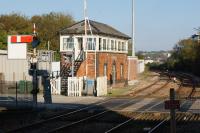
John McIntyre 12/10/2015
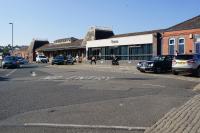
John McIntyre 12/10/2015
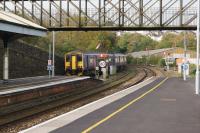
John McIntyre 14/10/2015
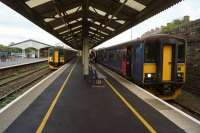
John McIntyre 14/10/2015











